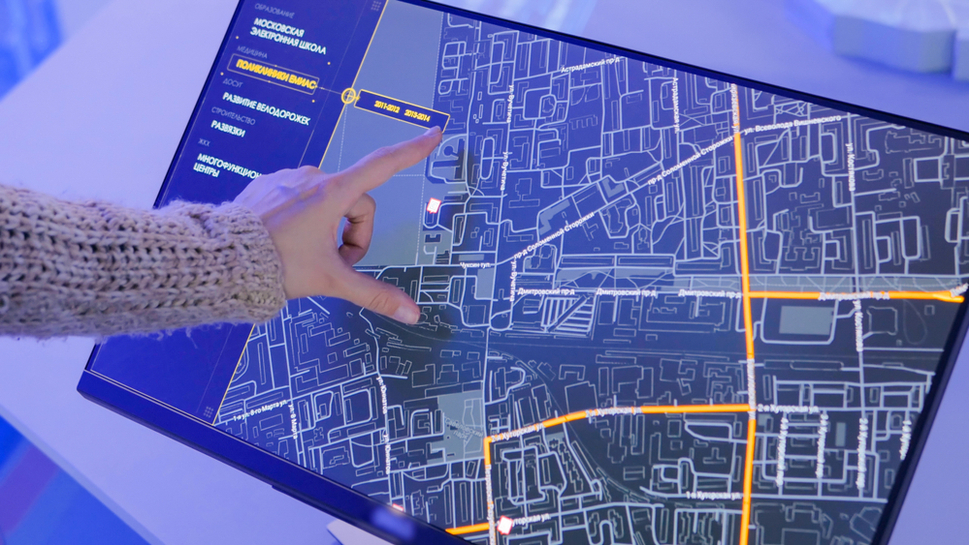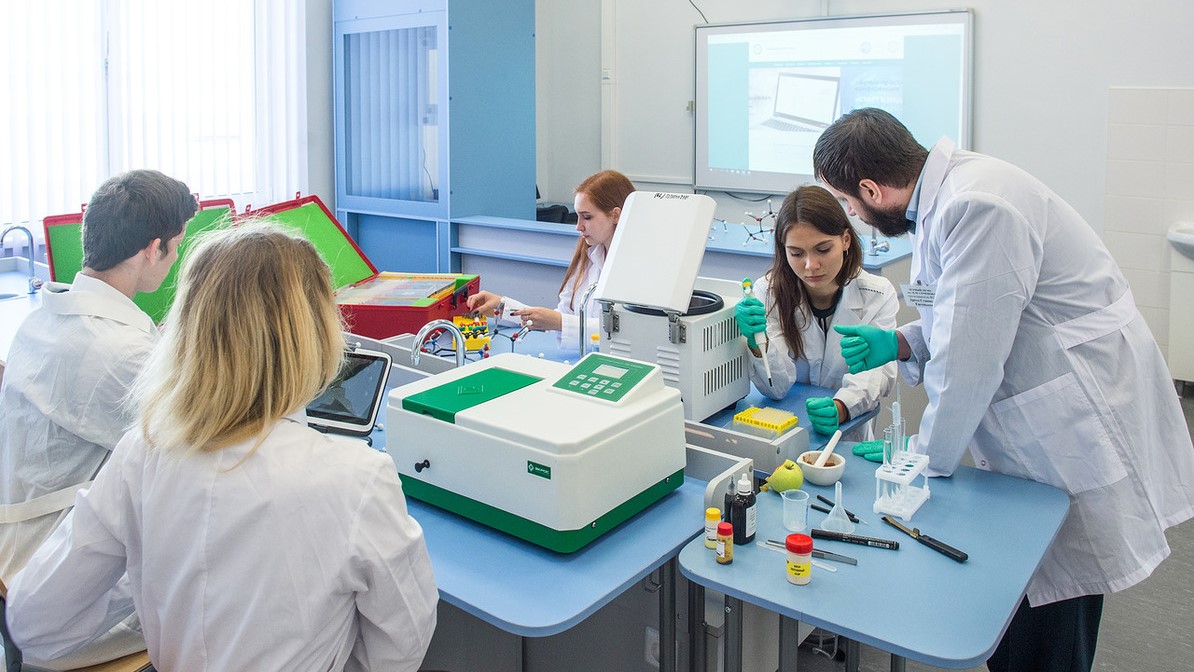Moscow wants to be a model smart city; this is how they plan to achieve it
The Russian capital is investing heavily in technology

The concept of smart cities is a well trodden one and has been at the core of the expansion of some of the world’s big megalopolises.
Moscow, however, rarely comes to mind when thinking about technology, primarily because Russia is often considered to have a significant tech presence - unlike China or the US.
Companies like Rostec and Kaspersky are changing this and so are initiatives like Moscow’s City-as-a-service. Qualcomm for example, chose the city to launch Europe’s first 5G mmWave network in partnership with Moscow’s Department for Information Technologies of Moscow. We caught up with its head, Eduard Lysenko, to find out more about what they have been doing.
- What is a smart city and how does one plan for it?
- How businesses can unlock smart city success
- 5G and smart cities: everything you need to know
Can you tell us a little about the city-as-a-service concept and how it has benefited the citizens of Moscow?
The digitalization of Moscow started in 2011 and since then the city has become one of the leaders in providing e-services for citizens, with more than 11m citizens using city services today.
Initially, we had to digitize the city management systems. A few years later we started to introduce e-services for citizens that became very popular. The main feature of e-services in Moscow is that they are being developed by DIT and therefore they have a similar interface, the same login system and all of the services are connected and can interact with each other. It makes it easier for citizens to use.
At the same time we provided opportunities for the development of mobile networks. Due to cheap internet access and huge coverage (99 percent of Moscow is covered by 4G) the penetration of smartphones exceeded 83 percent. So the citizens of Moscow were ready to use these services.
As for the services themselves, they seek to cover all the needs of citizens. They include the EMIAS medical portal, the Active Citizen portal that runs polls for citizens, the Moscow E-school and the portal of the mayor of Moscow, mos.ru. However, there are also services for tourists, complaints, crowdsourcing etc. I’d like to briefly introduce some of these services.
First of all, the EMIAS service for making online appointments in Moscow public clinics, thanks to which the average waiting time to see a doctor has been reduced to five minutes and 95 percent of prescriptions are now issued in electronic form. With the Moscow E-school, we are creating a high-tech environment to improve the quality of education in Moscow schools. There is also a well-known e-polling service called Active Citizen, which allows Muscovites to make decisions on urban development. Almost 2.3m citizens participate on the platform and about 4,000 decisions have already been implemented via this service. We have recently been developing Crowd.Mos where, in contrast to Active Citizen, people can independently suggest their own initiatives for the city.
As for the possibility of interaction, we are now working on a full integration of all services. For example, in the future, when the winter flu epidemic begins in the city, EMIAS will be able to notify all schoolchildren and their parents of the need for protection and vaccination. All our services will form a single network aimed at helping citizens in a variety of situations. And finally, the mos.ru portal, which is a platform that aggregates all e-services for citizens in one place, as well as providing the latest news about the life of the capital. Mos.ru allows citizens to understand which e-services exist and how they can be received, which saves them time.
One of our aims is to save time for people and this is something that Moscow’s services can do. In our case, speed means comfort. Already, the introduction of EMIAS is saving doctors up to two million hours per year. Making life more comfortable for citizens implies that the city provides services to residents at all levels. Before the digitalization started, people had to spend a lot of time to use city services and go to different institutions but now they are all available online. Last year, we reached 170bn visits to e-government services and $ 1.5bn in payments were processed.
But for us, things don’t end with the provision of basic services. We are striving to add specific new services in accordance with the requests of citizens. For example, in summer, free sports activities with coaches and equipment are now available in Moscow parks for registered users. We are now working on responding to all relevant and adequate needs of people because this approach allows us to boost awareness and the desire to improve in people themselves. In this way, the city itself, in a sense, is becoming a service for citizens - and our aim is to make sure that this is a high-quality service.

How successful have the city’s network of CCTV cameras and facial recognition system been in preventing crime?
Moscow has one of the world's largest network of CCTV cameras, second only to London (according to 2016 PWC estimates). These cameras are now helping to solve about 70 percent of all crimes committed in the city.
As for facial recognition, at the moment there are 1,500 cameras in Moscow connected to this system in a pilot project. Video analytics takes place in automatic mode and notifies the city services if necessary. In automatic mode, the camera responds to gestures, movements and elements of behavior, thereby revealing suspicious activity. This year, we plan to launch the system on 105,000 cameras - that is, all cameras capable of observing human faces will be covered. The majority of the cameras are installed in courtyards, entrances and subways, where the footfall is greatest. We expect to reduce the overall number of crimes by 20 to 40 percent by next year.
In addition to the city cameras, we are developing other technologies with facial recognition capabilities. For example, we tested augmented reality glasses with facial recognition for police. These glasses make it possible to recognize a criminal in the midst of a crowd and significantly reduce the time required to capture criminals.
Again, many speak critically about video surveillance with a facial recognition system, believing that the government wants to establish surveillance of people. But I can tell you about a successful case - during the 2018 World Cup in Moscow, cameras with facial recognition were used to identify 98 fans banned from visiting fan zones. This helped to provide us with a decent level of security during the championship and not expose people who came to watch the game to unnecessary risk.
The global aim here is to provide a self-regulating and high-quality system, reducing any possible risks for our citizens.

What security measures have been put in place to protect the government-run storage facility that houses the data collected by the cameras?
Providing cyber security for the data was top-priority since the very beginning of the digitalization. Fault-tolerant data processing centers belonging to the Government of Moscow are used as a basis for countering attacks. So far, a data protection system has been built for the data center, which has made it possible to ensure the protection of the information systems located in the data center.
In 2018, we took measures to identify unauthorized access to the Moscow data storage and processing centers. During this year, more than 27,572 cyberattacks have been blocked. We are constantly improving our security system, conducting inspections and audits of security systems.
The correct functioning of the newly built information protection system has been confirmed by the positive results of certification tests for compliance with information security requirements and the issue of a certificate of conformity of the information facility with information security requirements.
As for our surveillance system, access to these cameras is also limited and controlled. In 2018, we developed an automated information system called Access Control System for Information Systems and Resources of the City of Moscow, which is designed to ensure safe, reliable identification and authentication of users when accessing the information systems of Moscow. The video retention period is about five to seven days. Within five days, any citizen can apply for data from video cameras. According to the statistics, 80 percent of users contact us within three days and a further 15 percent in the remaining two days.

Moscow is known for having the best e-government services. Can you tell us about the Active Citizen app and how Muscovites are using it to participate in city government affairs?
We created the Active Citizen service in 2014 at the initiative of the Government of Moscow. This is a service of electronic polls for citizens, enabling them to make decisions on important citywide issues. Active Citizen is unique case – the service allows ordinary citizens to influence what is going on in the city. Any Moscow resident who has a Russian mobile operator SIM card can register and get involved in changing Moscow.
To attract citizens, we use elements of gamification — for participation in polls and other activities, users are encouraged with points, which can later be exchanged for various kinds of benefits. As of July 2019, about 2.3m users have registered using the application and more than 4,000 polls have been conducted. Among the decisions made by users, it is worth noting the creation of 25 local parks, 10 new bus routes and bicycle lanes. In addition, citizens can choose names for various urban innovations. For example, this is how the name was chosen for the Moscow Metro’s Third Circle.
Active Citizen is one of our most important services and despite the fact that now it is already successfully operating, we are still devoting energy and resources to promoting and popularizing it.
This year, the service turned five years old and we organized a big celebration in one of the main parks of Moscow. We run these events not so much to attract more users but to increase loyalty among current users.
In addition to Active Citizen, I would like to talk about the launch of the My District service. In simple words, this is like a small version of Active Citizen, where residents of a particular district can make decisions on how to improve their area. We believe that decisions at all levels are important, and My District allows residents to exercise more autonomy in matters of city infrastructure.
Of course, we have been repeatedly criticized for the fact that Active Citizen offers a limited choice and range of issues for consideration. So, this year, we have launched the Crowd.Mos service, which allows people to independently propose their own urban planning initiatives. I can say that we are proudly a world leader in the implementation of ideas proposed by citizens.
I would also mention an experiment with blockchain elections to the Moscow City Parliament this year in the context of e-government. Connecting blockchain technology will not only enable online voting but also ensure the transparency of the elections and the impossibility of changing results, which will be securely encrypted.

How is AI being used in Moscow to improve healthcare?
For a start, it is important to point out that public healthcare in Moscow, as in all of Russia, is free. As you know, Moscow is a gigantic metropolis, accordingly, a huge amount of resources, including humans, are needed to serve all citizens. Currently, the city has about 244 public hospitals and 444 clinics, which employ more than 44,000 doctors.
As part of DIT’s Smart City program, city polyclinics have been connected to the artificial intelligence system. Online services are helping to reduce queues in clinics and make it easy to communicate with doctors. For example, today the majority of city clinics have implemented a patient flow control mechanism - the mechanism covers more than 60 percent of all doctors and allows you to correctly distribute the number of patients for each doctor. Thanks to this system, citizens can see a doctor as soon as possible, and the queues in most metropolitan clinics have almost been eliminated.
Accordingly, it is very difficult to manage this entire system and artificial intelligence helps us in this. In addition to facilitating the process of managing and allocating resources, citizens can now receive their analyses and test results by e-mail, which means they don’t need to go back to the clinic. This makes life easier for everyone - both patients and doctors.
The online service for registering with a clinic without a personal visit has also become very convenient for Moscow citizens. At the end of last year, more than 51,000 people registered with clinics in this way.
A key innovation in the health system is the beginning of the implementation of the Digital Vision pilot project. With the help of big data and artificial intelligence, doctors now have the opportunity to diagnose cancer in its early stages, as well as to assess stroke risks. The use of this technology has already increased diagnostic accuracy in Moscow by 15 percent.
In addition to improving the process of receiving and organizing treatment of patients in clinics, we are interested in the development of telemedicine. Of course, online consultation will never replace a full-fledged doctor's appointment, especially in difficult cases. However, it may be useful for primary symptoms and in cases where a visit to the doctor may not be necessary.

How is the Department of IT using big data to deliver insights about city residents?
DIT processes 14.3 terabytes of data daily. Big data processing technologies allow us to structure and transform the initial data file more quickly and with minimum labor costs, reducing the amount of information that people work with and thus the time spent on solving these problems. Big data helps us better understand our citizens. Thanks to big data, we can make a portrait of a Moscow citizen, understand their preferences and address whatever problems they have. For example, what changes in the infrastructure of the city they need and what is missing. Also, big data can help in predicting natural disasters or epidemics. Today, by analyzing this data, we know what problems are emerging. It is now possible to draw up a plan for the repair of roads or to build social facilities on the basis of this information. In one district, for example, you need to build a school, and in another, residents need additional parking zones.
Moreover, big data provides an opportunity for personalization. For example, there is automatic SMS notification of residents of specific areas of unplanned situations - water shutdown, snowfall, road works, and so on. Big data has long been used in the Moscow call center. First of all, our robot with artificial intelligence is connected to the call center and is trained to answers citizens' questions. At the end of the year, we are planning a pilot launch of a new robot, which can analyze the history of previous calls to predict the nature of a new call. This will significantly reduce the total call time. I notice that many companies, including public ones, consider robots with artificial intelligence to be unprofitable and expensive to develop. However, with the help of our robot, we were able to completely reassign human operators from simple questions to more complex ones, thereby saving them time and energy and reducing labor costs.
We also have separate benefits for businessmen. This year, we are planning to launch a robot that will help automate purchases and inform Moscow entrepreneurs about upcoming tenders. We plan to add more features to it in the future.
- This is everything you need to know about smart cities and 5G
Are you a pro? Subscribe to our newsletter
Sign up to the TechRadar Pro newsletter to get all the top news, opinion, features and guidance your business needs to succeed!